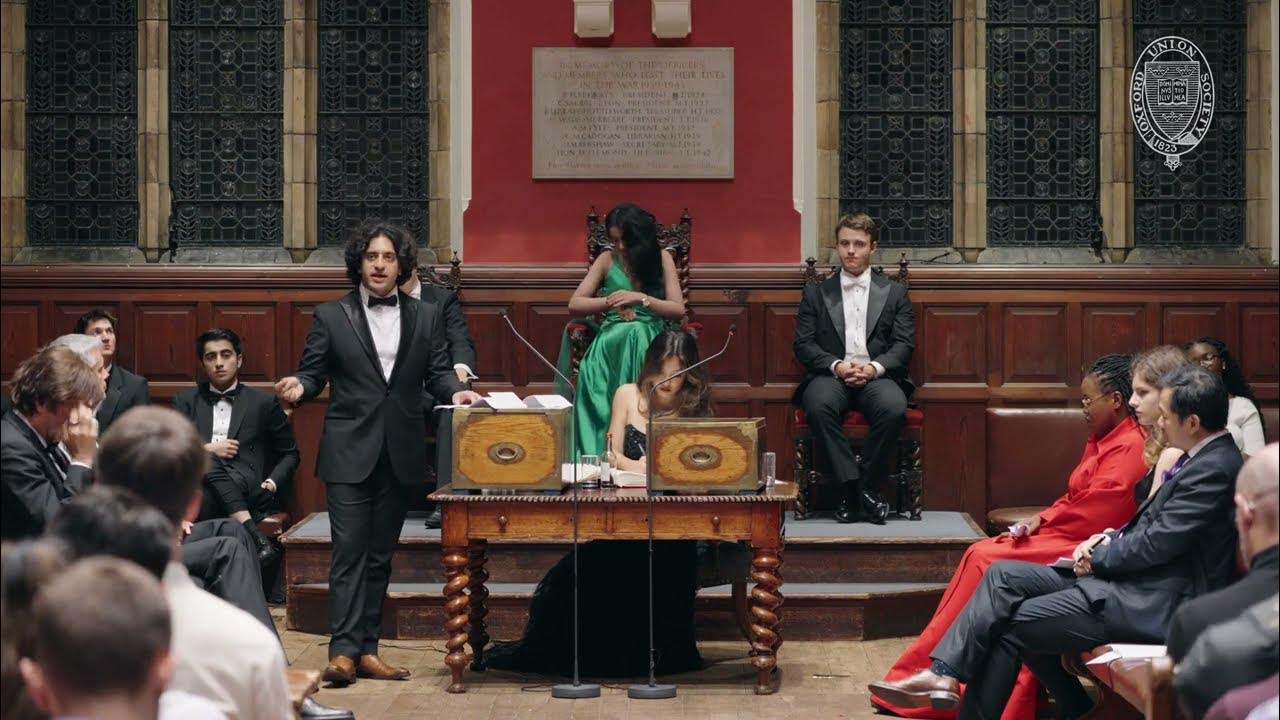Ana Rosca argues that human control and regulation of AI prevents it from being a threat (6/8)
Summary
TLDRThe debate script addresses the notion that AI poses an existential threat to humanity. It argues against the idea, stating that AI lacks intent and can be controlled through design and regulation. The speaker asserts that AI does not threaten our physical existence or our philosophical understanding of humanity, emphasizing that human direction in AI development is key. They also highlight the importance of aligning AI with human values and the capacity for regulation, concluding that while AI carries risks, it does not warrant being labeled an existential threat.
Takeaways
- 🤖 The fear of AI is not new; it echoes historical anxieties about technological progress, such as those during the Industrial Revolution.
- 🚫 Labeling AI as an existential threat is premature and lacks a solid foundation, as experts disagree on its development, timeline, and potential intelligence levels.
- 🚧 Our ability to predict the long-term consequences of technology is limited, and history shows we often underestimate the range of possible outcomes.
- 🛠️ AI systems can be designed with preventive measures, such as limiting data sources to reliable ones and programming safety features to prevent harm.
- 🌐 There is a global incentive to regulate AI due to its potential to reshape various aspects of society, and there is capacity for such regulation through government oversight and international collaboration.
- 🧠 AI lacks consciousness and understanding, making it a tool that relies on human direction, which means the risk lies more with human misuse than the AI systems themselves.
- 🎨 AI-generated art, while novel, lacks the expression and artistic value of human-created art, highlighting the distinction between AI's pattern recognition and human creativity.
- 🌟 Human creativity involves not just novelty but also value and agency, which AI lacks, thus AI does not threaten the essence of what makes us human.
- 📜 The philosophical underpinnings of humanity, such as consciousness, intentions, and creativity, are not under existential threat from AI.
- ⚖️ The goal with AI should be risk management rather than the unrealistic pursuit of zero risk, distinguishing between catastrophic and existential threats.
Q & A
What is the speaker's stance on the idea that AI is an existential threat?
-The speaker argues that labeling AI as an existential threat is premature and lacks a solid foundation. While AI does introduce complex risks, claiming it as an existential threat is excessive and requires more empirical evidence.
How does the speaker differentiate between a catastrophic risk and an existential threat?
-The speaker highlights that there is a distinction between a globally catastrophic risk and an existential threat. While AI could pose significant risks, labeling it as an existential threat without clear evidence is an exaggerated claim.
What is the speaker's argument regarding AI's motivations or intent?
-The speaker asserts that AI systems do not have motivations or intent. They operate based on pre-programmed rules and objectives given by humans, which can be controlled and constrained by developers to ensure AI systems do not cause harm.
What preventive measures does the speaker suggest to mitigate AI risks?
-The speaker suggests that preventive measures can be implemented through design and regulation. This includes programming boundaries, aligning AI with human values, ensuring transparency, and establishing regulatory frameworks similar to those used for nuclear energy and weapons.
How does the speaker address the concern about AI's potential to reshape society?
-The speaker acknowledges that AI has the potential to reshape public systems, industries, and daily lives. However, they argue that there is both an incentive and capacity to regulate AI, which will prevent it from becoming an existential threat.
What role does human direction play in AI development, according to the speaker?
-The speaker emphasizes that human direction is paramount in AI development. AI is a tool that relies on human guidance, and its risks stem more from human misuse rather than the technology itself. Proper regulation and oversight can mitigate those risks.
What does the speaker say about AI’s potential to replace human creativity?
-The speaker argues that while AI can generate art, it lacks the agency, intent, and emotional connection that define true human creativity. AI-generated content may be novel but does not have the same artistic value as human-created art.
How does the speaker counter the argument that AI might threaten human consciousness or moral capacity?
-The speaker asserts that AI does not threaten human consciousness, intentions, or moral capacity. AI lacks the ability to possess these human traits, which means that it cannot compete with the uniquely human experiences and values that define humanity.
What is the speaker’s view on the future development of AI in terms of existential threats?
-The speaker believes that current concerns about AI posing an existential threat are speculative and based on hypothetical scenarios. They argue that AI is not currently an existential threat, and it remains uncertain whether future developments will lead to such outcomes.
What does the speaker suggest about the global regulation of AI?
-The speaker suggests that international regulatory systems, similar to agreements on nuclear weapons and chemical weapons, can be developed to regulate AI. With relatively few players currently capable of creating advanced AI, it is feasible to implement regulations early.
Outlines

このセクションは有料ユーザー限定です。 アクセスするには、アップグレードをお願いします。
今すぐアップグレードMindmap

このセクションは有料ユーザー限定です。 アクセスするには、アップグレードをお願いします。
今すぐアップグレードKeywords

このセクションは有料ユーザー限定です。 アクセスするには、アップグレードをお願いします。
今すぐアップグレードHighlights

このセクションは有料ユーザー限定です。 アクセスするには、アップグレードをお願いします。
今すぐアップグレードTranscripts

このセクションは有料ユーザー限定です。 アクセスするには、アップグレードをお願いします。
今すぐアップグレード関連動画をさらに表示

CHAT GPT और Artificial Intelligence | कैसे GPT USE करें | ROBOTS V/S HUMANS | JOBS RISK | Alakh GK

Why AI progress seems "stuck" | Jennifer Golbeck | TEDxMidAtlantic

Sultan Khokhar warns of existential risks posed by increasing use of Artifical Intelligence (1/8)

CIA SPY: "Trump & Biden Are Both Bad For America" - Leave The USA Before 2030? | Andrew Bustamante

Yuval Noah Harari Explains How Social Media Is Hacking The Human Brain | NDTV Profit

Les 10 dangers de l'intelligence artificielle
5.0 / 5 (0 votes)
